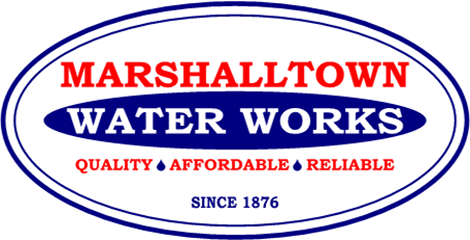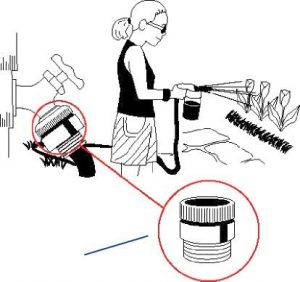What is cross connection and how can it be harmful?
Cross connection is an actual or potential connection between the public drinking water supply and a customer’s plumbing system that makes it possible for used water, pollutants, or contaminants to enter the public drinking water supply. If a pollutant or contaminant enters the drinking water through a cross-connection, it may call illness and spread of disease.
An example of a cross-connection that may be present at your home would be a hose-end sprayer used to apply lawn chemicals. If the pressure in the water main drops, the chemicals in the hose-end sprayer could be siphoned into the home and public drinking water supply. This situation is easily remedied by installing a self-draining vacuum breaker onto the faucet. Hose bib vacuum breakers are easy to install and readily available at your local hardware store.
What is backflow, backpressure, and backsiphonage?
Backflow is the undesirable reverse flow of used water contaminants or pollutants into the public drinking water supply as a result of a cross-connection. Backflow can occur through backpressure or backsiphonage. Backpressure backflow is caused by water pressure in a facility that is higher than the pressure of the public drinking water supply. This may be caused by pumps, boilers, gravity or other sources of pressure. Backsiphonage is the reverse flow of used, contaminated or polluted water from a plumbing fixture or device into the public drinking water due to reduced pressure. This can be caused by nearby fire fighting, water main breaks, or repairs.
Backpressure Example: The chemically treated boiler water could backflow through an open or defective valve into the building’s plumbing system due to the boiler system pressure being higher (80 lbs.) than the supply pressure (60 lbs.) Installation of a backflow preventer on the water line at the point where it connects to the boiler. This type of installation is referred to as “isolation.”
Cross Connection and Backflow Prevention Program
The Marshalltown Water Works is responsible for providing safe, high quality drinking water to the citizens of Marshalltown. The City of Marshalltown’s Backflow Prevention Program is a critical component of the MWW’s efforts to safeguard the public water supply and the health of our consumers. National and state legislation requires the City of Marshalltown to implement a Backflow Prevention Program with containment provisions. Containment is a method of backflow prevention, which requires the installation of a backflow prevention assembly at the water service entrance. These devices serve as a barrier by ensuring that backflow incidents are contained within the facility. Marshalltown Water Works, acting as the City of Marshalltown’s agent, is required to enact and administer a backflow prevention program with containment provisions following the National, State, and local regulations. To read more about the regulations, please see Section 105.2 of the Marshalltown Water Works’ Rules and Regulations.
The customer is responsible for installing and maintaining the appropriate backflow prevention device(s). The Administrative Authority cannot test, certify or install any device. The backflow device(s) should be installed at the service entrance after the meter. Each backflow prevention device must be tested once a year to retain its certification. The Marshalltown Water Works will send out a notice at least 30 days prior to the annual certification date and the customer will have until 30 days after the annual certification date to have the device(s) certified. Water may be shut off
if the customer does not have a certified device at the service entrance 30 days after the annual certification date. Testing and certification must be performed by a currently registered backflow prevention assembly technician.

